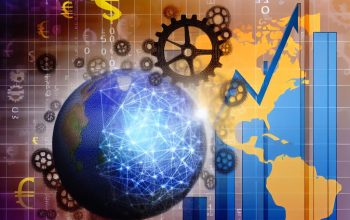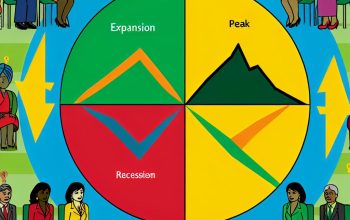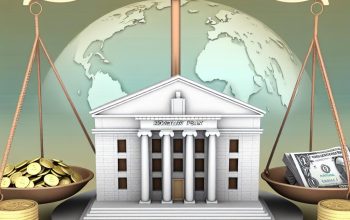Understanding Economic Growth
Economic growth lies at the heart of economic theory and practice, epitomizing the increase in the capacity of an economy to produce goods and services over time. This concept is pivotal as it often indicates the enhancement of living standards and the creation of additional employment opportunities. Growth in economic activities generally reflects a nation’s efficacy in utilizing its resources, resulting in improved public services and infrastructure.
Factors Contributing to Economic Growth
Understanding the factors that drive economic growth is essential for policymakers and economists who endeavor to optimize a country’s economic trajectory. Many elements work in concert to bolster economic growth, making it a complex phenomenon with multiple influences.
Capital accumulation is fundamental to economic growth. It entails investing in physical capital such as machinery, equipment, and infrastructure, which all serve to enhance the productivity of an economy. These investments improve production capabilities, enabling more output with the same amount of input.
The expansion of the labor force is another critical factor. As more individuals enter the workforce, there is a corresponding increase in the potential output of an economy. This expansion is influenced by population growth, the participation rate of different demographic groups, and immigration policies.
Advancements in technology are perhaps the most potent driver of economic growth. Technological innovations can lead to more efficient production processes, cost reductions, and the development of new goods and services. As technology evolves, economies can achieve growth even without increasing inputs, owing to better efficiency and productivity.
Human Capital
Human capital refers to the skills, knowledge, and experience possessed by individuals in the workforce. Investments in education and skills development are vital as they enhance the quality of human capital. A well-educated workforce can adapt to new technologies more efficiently and contribute to innovation within their respective fields. This adaptability and innovation can catalyze improved productivity and efficiency, driving economic growth.
By focusing on improving educational systems and providing training opportunities, countries can foster a workforce capable of meeting the demands of an evolving global economy. Skilled workers are often better positioned to innovate, creating new industries and enhancing existing ones, which drives further economic growth.
Measuring Economic Growth
The measurement of economic growth is traditionally carried out using the Gross Domestic Product (GDP), which quantifies the total monetary value of all finished goods and services produced within a country’s borders within a specific time frame. GDP serves as a foundational metric in not only assessing an economy’s size but also understanding its dynamism over time.
Real Versus Nominal GDP
GDP is expressed in both nominal and real terms to provide a comprehensive view of economic activity. Nominal GDP represents the value of all finished goods and services at current market prices, capturing changes in production and price levels. However, since it does not account for inflation, nominal GDP can sometimes exaggerate growth rates.
Real GDP offers a more accurate measure of economic growth by adjusting for inflation. It reflects the economy’s true expansion by isolating the effects of price changes, thus providing a clearer picture of whether growth in economic output has indeed occurred.
GDP per Capita
While GDP encapsulates the size of an economy, GDP per capita divides the GDP by the population to gauge average economic output per person. This metric helps to assess living standards, offering insights into the economic well-being of individuals within a nation. By considering per capita figures, it becomes possible to discern whether increases in GDP are translating into real benefits for the populace.
Alternative Measures of Economic Growth
Despite its widespread use, GDP has limitations, prompting economists to consider alternative measures of economic growth that capture facets of progress potentially overlooked by GDP.
Gross National Product (GNP)
Gross National Product (GNP) extends the conventional GDP measure by encompassing the total of goods and services produced by a country’s residents, irrespective of their location. By including income earned abroad by nationals, GNP offers a broader picture of the economic activity attributed to a nation’s citizens, serving as a useful complement to GDP.
Human Development Index (HDI)
In recognition of the multidimensional nature of development, the Human Development Index (HDI) was introduced as a composite statistic. It considers health, education, and income indicators to provide a more comprehensive perspective on progress. By integrating factors related to human well-being, the HDI serves as a richer gauge of a nation’s development beyond mere economic activity.
Conclusion
Understanding and measuring economic growth is of paramount importance for shaping effective policies and assessing the success of developmental strategies. While GDP remains the central metric, exploring supplementary measures such as GDP per capita, GNP, and HDI can yield deeper insights into economic progress and the broader context of human well-being. For stakeholders interested in delving into economic growth statistics and methodologies, resources from global organizations like the International Monetary Fund or the Organisation for Economic Co-operation and Development offer valuable insights that can inform analysis and decision-making.
This article was last updated on: April 14, 2025




